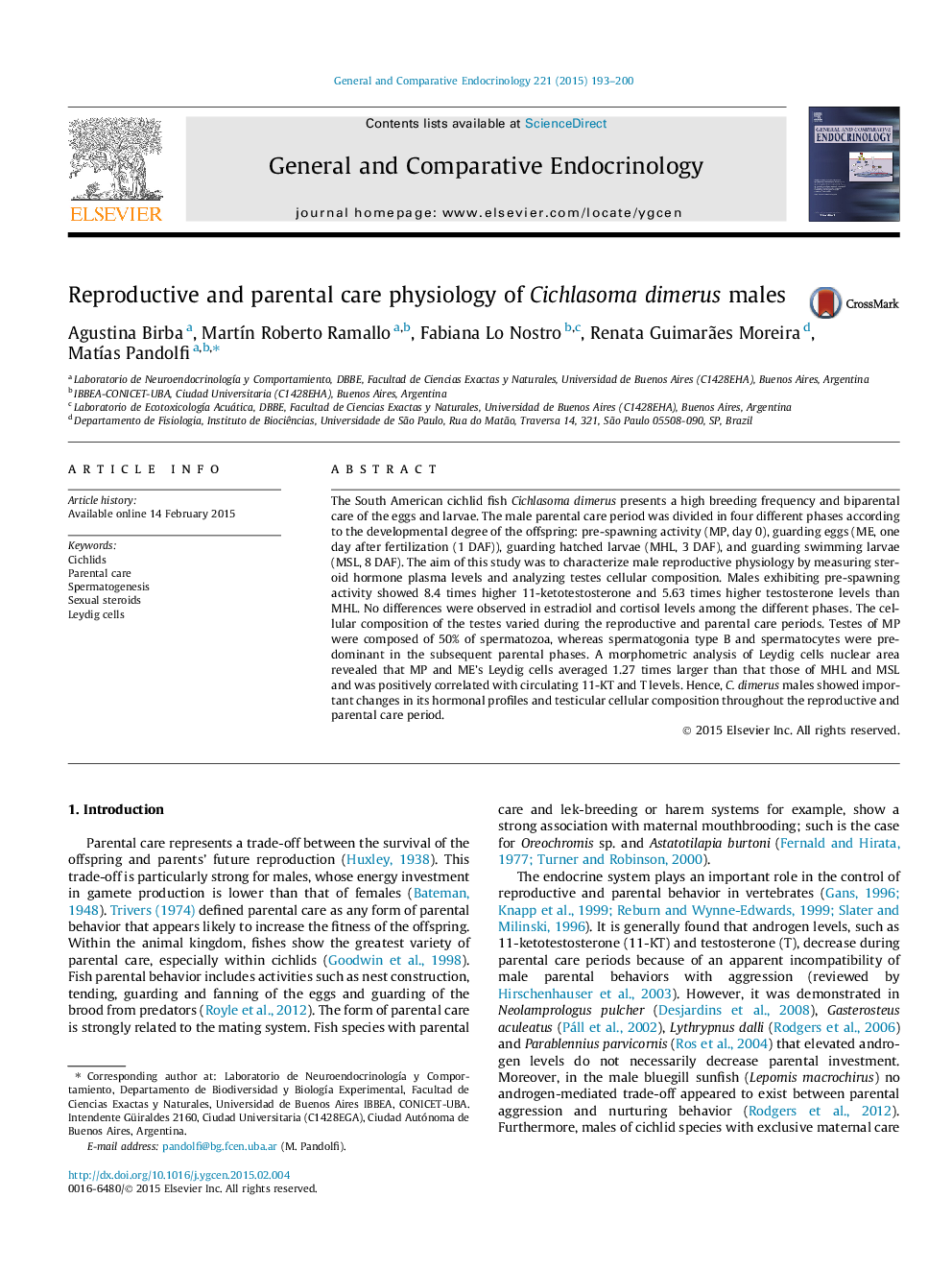| Article ID | Journal | Published Year | Pages | File Type |
|---|---|---|---|---|
| 2799920 | General and Comparative Endocrinology | 2015 | 8 Pages |
•We analyzed the reproductive and parental care physiology of Cichlasoma dimerus males.•We found the highest androgen levels in C. dimerus males with pre-spawning activity.•C. dimerus males with pre-spawning activity presented testes composed mainly of spermatozoa.•We found high androgen levels and active spermatogenesis during C. dimerus parental care stage.
The South American cichlid fish Cichlasoma dimerus presents a high breeding frequency and biparental care of the eggs and larvae. The male parental care period was divided in four different phases according to the developmental degree of the offspring: pre-spawning activity (MP, day 0), guarding eggs (ME, one day after fertilization (1 DAF)), guarding hatched larvae (MHL, 3 DAF), and guarding swimming larvae (MSL, 8 DAF). The aim of this study was to characterize male reproductive physiology by measuring steroid hormone plasma levels and analyzing testes cellular composition. Males exhibiting pre-spawning activity showed 8.4 times higher 11-ketotestosterone and 5.63 times higher testosterone levels than MHL. No differences were observed in estradiol and cortisol levels among the different phases. The cellular composition of the testes varied during the reproductive and parental care periods. Testes of MP were composed of 50% of spermatozoa, whereas spermatogonia type B and spermatocytes were predominant in the subsequent parental phases. A morphometric analysis of Leydig cells nuclear area revealed that MP and ME’s Leydig cells averaged 1.27 times larger than that those of MHL and MSL and was positively correlated with circulating 11-KT and T levels. Hence, C. dimerus males showed important changes in its hormonal profiles and testicular cellular composition throughout the reproductive and parental care period.
